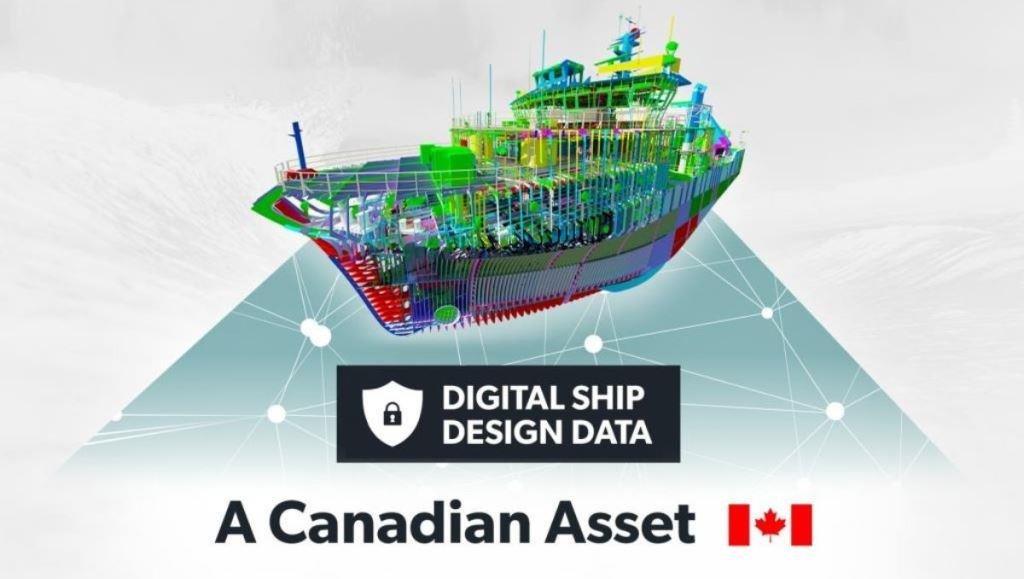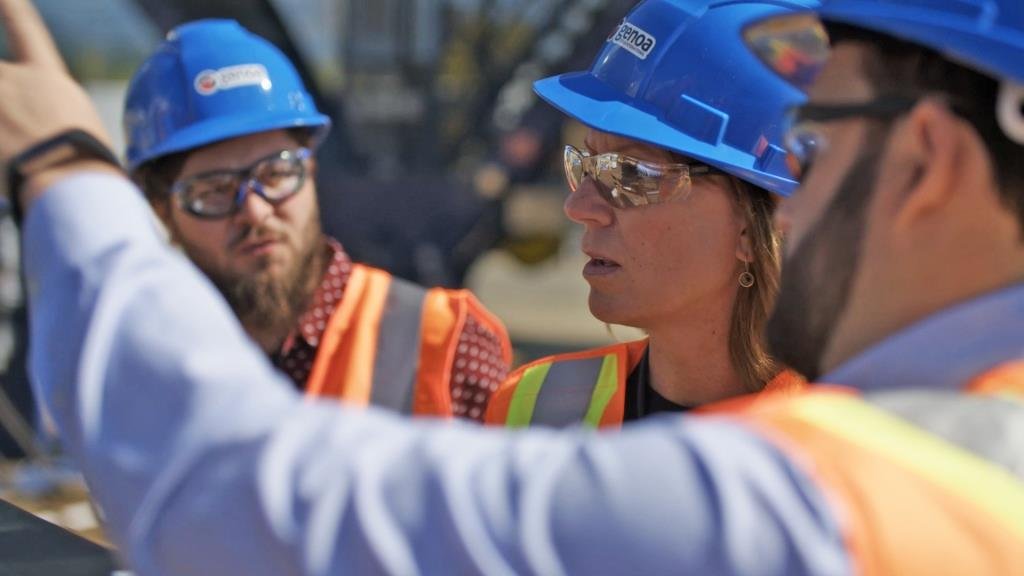INDUSTRY PROFILE - Genoa Design
BY MARC MONTGOMERY
NSS 2.0
WHY CANADA MUST CONTINUE TO BUILD UPON THE SUCCESSFUL NATIONAL SHIPBUILDING STRATEGY (NSS)

Pecore has an outspoken vision as a strong advocate for Canada’s marine industries’ future, not only for her company, but even more so for the nation’s economy and security.
“I’m a Canadian through and through, an Atlantic Canadian, running a Canadian company primarily operated by Canadian employees and the NSS has been a building block for us. But I take a broader view as to why the NSS is essential,” Pecore told CDR.
DIGITAL TWINS
A former RCN Master Seaman reservist, in 1994 she helped Leonard Pecore, a former naval officer retrained in naval architecture, launch Genoa Design International - a 3D digital design and modeling firm based in Mount Pearl, NL., just outside St. John’s. Genoa’s digital ship models help form the technical data package for a vessel’s construction. These early ‘digital twins’ of the ship are increasingly being used for extended lifecycle value, such as in training and simulations, maintenance and refit planning, and in reducing dockside times.
Pecore helped grow Genoa Design from its kitchen table origin to today’s 200+ employees with offices in Mount Pearl, Halifax, Vancouver, and New Orleans.
The firm has been involved with the National Shipbuilding Strategy since the outset, supporting vessels in the non-combat program. The team is currently preparing to support Seaspan’s construction of the first heavy polar-class icebreaker to be built in Canada in some 60 years. Seaspan announced in May that they had cut steel to build a ‘Prototype Block’ for this complex vessel. Concurrently, Genoa is also supporting Bollinger Marine on the polar icebreaker program in the US.
Pecore says that under the NSS, significant investment has been made to re-build the shipbuilding industry in Canada, including a focus on Canadian capability. In her view, issues and delays that have been highly publicized and heavily debated, were largely to be expected when recovering an industry left to wither after the Canadian Patrol Frigate program of the 90s.
“Now is not the time to turn away from the NSS,” Pecore said. “On the contrary, now is the time to lean in and ensure what has been built so far continues as a sustainable backbone to Canada’s ocean ambitions and responsibilities.”
NSS 2.0 
It is the future of the entire industry, and Canada, for which she advocates. In some ten years, Canada’s NSS has raised a moribund industry into a busy, increasingly world-class ship design, building, and maintenance sector stretching across the country. She feels strongly that the momentum must be maintained with a reinvigorated policy.
Pecore says the original reasons for the NSS were mostly economic and focused on the construction phase of fleet renewal, but much has changed. Canada now has broader fleet management priorities and geopolitical and climate issues have risen dramatically. Coastline communities, ocean research, the opening of the North West Passage and Arctic shipping routes, obligations to our Allies - these and many other factors, she says, are big realities facing Canada as a global ocean economy.
“We have the longest coastline in the world, so we have a lot at stake, and a lot of opportunity,” Pecore told CDR. “To be a vibrant ocean economy, we need a ready and capable national fleet. I believe procurement policies are not just important for economic benefit and for companies like Genoa, they are important for the future of Canada. We share a heightened sense of attentiveness to coastline protection, but you don’t do any of that without having a very well-defined and well-resourced marine capacity.”
Noting that the strategy involves not only critical shipbuilding facilities, but also infrastructure, workforce capability, expertise, and dockside support, Pecore says an NSS 2.0 policy refresh is needed to ensure these capabilities are broadly understood as critical to Canada’s ability to engage in defence, security, climate research and coastal and community well-being.
Some might argue it would be cheaper and faster to buy ‘off the shelf’ foreign vessels. Pecore says that’s a false economy when you think of the many thousands of jobs and high degree of skill sets that have been developed here, and the potential for exports of Canadian expertise and products, as is the case with Genoa, which already has contracts with the U.S. Coast Guard and some U.S. commercial yards.
CONTINUING THE MOMENTUM 
Given our pandemic experience and pressure on supply chains and various supply and security issues, Pecore says it is also critical to maintain and build upon our current domestic supply capability.
“I think it’s evident we let it go too far before we reinvigorated our Coast Guard and combat ships and we’re behind now,” said Pecore. “Other countries around the world are ahead of us in icebreakers, warships, science and support vessels. Provinces are also in need with ferries and other ships requiring updates in many jurisdictions. And changing weather, sea and ice conditions make it critical for us, in Canada, to be able to design, build and maintain our own fleets. The NSS in its current construction context will come to an end, but my challenge to policy makers is, let’s be sure we don’t diminish the good work done under NSS 1.0. Let’s continue on the next path of this journey.”
Pecore would like to see the federal government engage with Canadian shipyard and supply chain reps to discuss the future needs and directions of the National Shipbuilding Strategy. She points out that when the NSS began just over ten years ago there really weren’t that many in the Canadian industry to talk to – which confirms the success of the federal policy.
“Canada cannot afford to lose momentum, especially considering the amount of time, money and effort that has been invested,” Pecore said. “The time is now to explore what the next version of federal policy looks like. The federal government was wise enough to rebuild a domestic shipbuilding industry, it must be wise enough to keep it going and growing to serve Canada and other nations as well.”
Marc Montgomery is a Regular CDR Contributor

